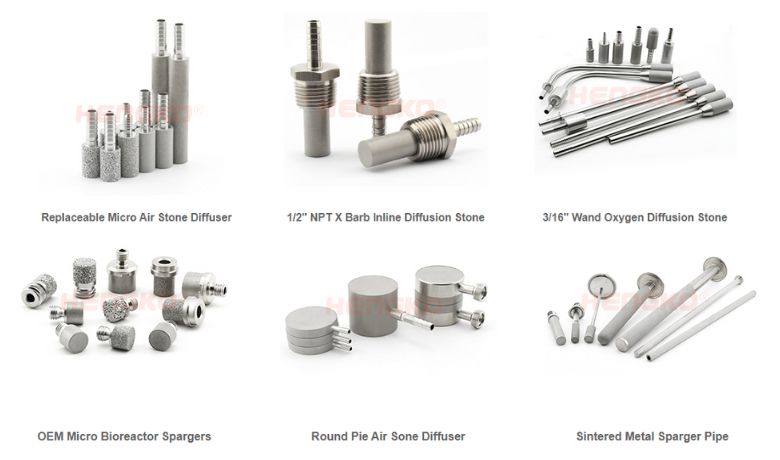-

Sintered stainless steel 316L aeration carbonation stone air stone ozone air sparger 0....
HENGKO carbonation stone is made of the food grade best stainless steel material 316L, healthier, practical, durable, high temperature resistant, and anti-co...
View Detail -
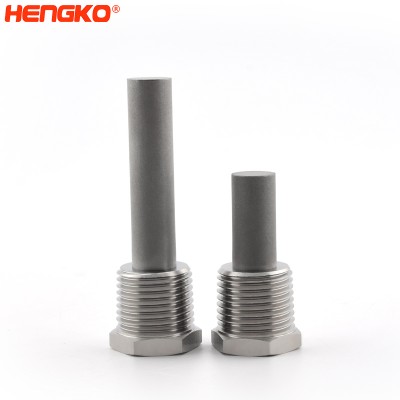
home brew beer kit carbonation stone air sparger aeration stone diffusion used for hydr...
Sintered air stone diffusers are often used for gas distribution and air aeration. They have a wide range of pore sizes from 0.2 microns to 120 microns allow...
View Detail -
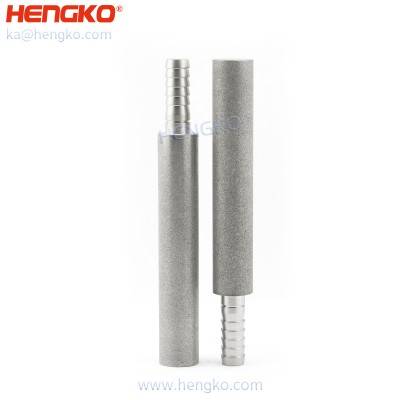
Air sparger bubble diffuser carbonation stones provide the quickest method for infusing...
HENGKO Diffusion Stones, or 'Carbonations Stones', are commonly used to aerate the wort before fermentation, which helps ensure a healthy start to the fermen...
View Detail -
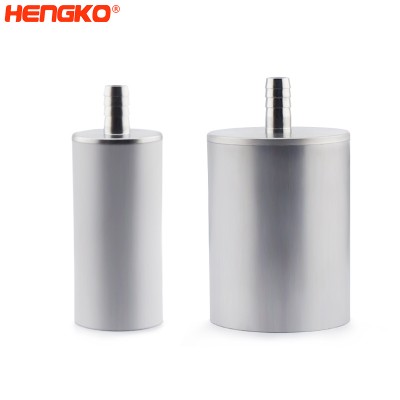
0.5 2 microns stainless steel air diffuser beer carbonation stone 1/4″ barb for home br...
HENGKO carbonation stone is made of the food grade best stainless steel material 316L, healthier, practical, durable, high temperature resistant and anti-co...
View Detail -
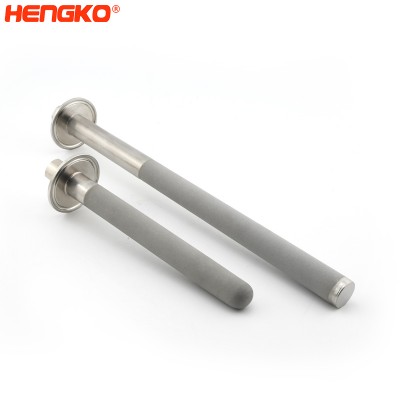
Stainless steel 316L SFC04 home brew 1.5″ Tri Clamp fitting 2 micron diffusion stone ai...
HENGKO sintered spargers introduce gases into liquids through thousands of tiny pores, creating bubbles far smaller and more numerous than with drilled pipe ...
View Detail -
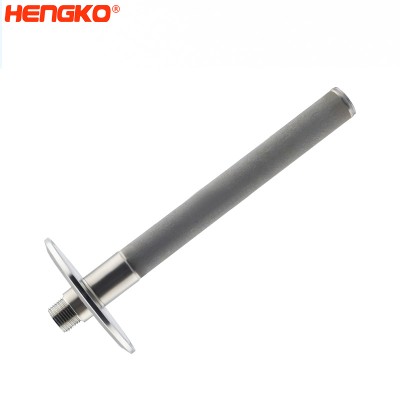
Sanitary 316L Stainless Home Brew 1.5″ Tri-Clamp Air Sparger 2µm Carbonation Diffusion ...
HENGKO sintered spargers introduce gases into liquids through thousands of tiny pores, creating bubbles far smaller and more numerous than with drilled pipe ...
View Detail -

SFC07 1/5″ Tri Clamp Inline Carbonation Stone Air Diffusion for Brewing Industry
The most efficient system on the market for carbonation or micro-oxygenation. Submersing porous body diffuses CO 2 gas directly into the liquid to create car...
View Detail -

Sintered stainless steel micro hydrogen ozone oxygen generator diffuser air stone for w...
HENGKO stainless steel ozone diffuser made of 316L stainless steel material has the advantage of durable, high-temperature resistance, anti-pressure and unif...
View Detail -
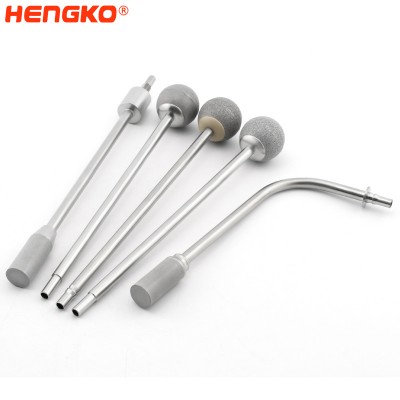
Air Bubble Smaller Bubble Aeration Diffusion Stone
Gas-Liquid inter-phase reactions are common in the Chemical industry. Reactions like Hydrogenation, Oxidation and Chlorination require sparging gases to be m...
View Detail
Air Diffuser vs Air Stone
Air diffusers and air stones are both tools used to add oxygen to water, but they have some key differences that might
make one a better choice for your application than the other. Here's a breakdown:
Air Diffusers:
* Oxygenation: More efficient at oxygenating water, particularly in larger systems.
They produce smaller, finer bubbles that have a larger surface area for gas exchange.
* Distribution: Provide more uniform oxygen distribution throughout the water column.
* Maintenance: Generally require less cleaning than air stones, as the fine bubbles are less likely to clog with debris.
* Noise: Can be quieter than air stones, especially when using fine-bubble diffusers.
* Cost: Can be more expensive than air stones.
* Aesthetics: May be less visually appealing than air stones, as they often have a more industrial look.
Air Stones:
* Oxygenation: Less efficient at oxygenating water than diffusers, but still effective for smaller setups.
They produce larger bubbles that rise quickly to the surface.
* Distribution: Oxygenation tends to be concentrated around the stone itself.
* Maintenance: May require more frequent cleaning due to the larger bubbles attracting more debris.
* Noise: Can be noisy, especially with larger stones or higher air pump pressure.
* Cost: Generally cheaper than air diffusers.
* Aesthetics: Can be more visually appealing, as they come in various shapes and colors and can create a bubbling visual effect.
| Feature | Air Diffusers | Air Stones |
|---|---|---|
| Oxygenation | More efficient, especially in larger systems. Produce smaller, finer bubbles for better gas exchange. | Less efficient, but effective for smaller setups. Produce larger bubbles that rise quickly. |
| Distribution | Provide more uniform oxygen distribution throughout the water column. | Concentrated around the stone itself. |
| Maintenance | Generally require less cleaning, as fine bubbles are less likely to clog with debris. | May require more frequent cleaning due to larger bubbles attracting more debris. |
| Noise | Can be quieter, especially with fine-bubble diffusers. | Can be noisy, especially with larger stones or higher air pump pressure. |
| Cost | Can be more expensive than air stones. | Generally cheaper than air diffusers. |
| Aesthetics | May have a more industrial look, potentially less visually appealing. | Often more visually appealing with various shapes, colors, and a bubbling effect. |
Here are some additional factors to consider for you when choosing between an air diffuser and an air stone:
* The size of your water system: Diffusers are generally better for larger systems, while stones are better for smaller ones.
* Your oxygen needs: If you need to add a lot of oxygen to your water, a diffuser will be more effective.
* Your budget: Air stones are generally cheaper than diffusers.
* Your noise tolerance: Diffusers can be quieter than air stones, especially when using fine-bubble models.
* Your aesthetic preferences: If you want a bubbling visual effect, an air stone may be a better choice.
Ultimately, the best choice for you will depend on your specific needs and preferences. I hope this information helps!
Can i Use Air Stone as CO2 Diffuser ?
No, you cannot effectively use an air stone as a CO2 diffuser. While they both add air or CO2 to water,
they function differently and have contrasting results. Here's a table summarizing the key differences:
| Feature | Air Stone | CO2 Diffuser |
|---|---|---|
| Purpose | Adds oxygen to water | Adds CO2 to water |
| Bubble size | Large bubbles | Tiny bubbles |
| Surface area for gas exchange | Low | High |
| CO2 diffusion efficiency | Poor | Excellent |
| Water circulation | Creates moderate water movement | Minimal water movement |
| Maintenance | Low maintenance | Requires regular cleaning to prevent clogging |
| Noise | Can be noisy, especially with high air flow | Typically quieter |
| Cost | Generally cheaper | Generally more expensive |
| Image |
Here's why air stones are not ideal for CO2 diffusion:
* Large bubbles: Air stones produce large bubbles that rise quickly to the water surface, minimizing CO2 contact with the water and reducing its effectiveness.
* Low surface area: The large bubbles have a low surface area for gas exchange, further limiting CO2 absorption into the water.
* Poor CO2 diffusion: Air stones are designed for oxygen diffusion, not CO2. They don't efficiently break down CO2 into tiny bubbles for proper water absorption.
Using an air stone for CO2 diffusion can actually be harmful to your aquatic life. The undiffused CO2 can build up in pockets,
creating dangerously high CO2 concentrations that can harm fish and plants.
Therefore, it's crucial to use a dedicated CO2 diffuser for optimal CO2 injection and effective plant growth in your aquarium.
CO2 diffusers produce tiny bubbles that maximize CO2 contact with the water, ensuring proper diffusion and beneficial effects
for your aquatic ecosystem.
Ready to elevate your system with a tailor-made Air Stone Diffuser?
Don't hesitate! Reach out to us directly at ka@hengko.com for all your OEM Special Air Stone Diffuser needs.
Let's collaborate to design a solution that perfectly fits your specifications. Contact us today!
